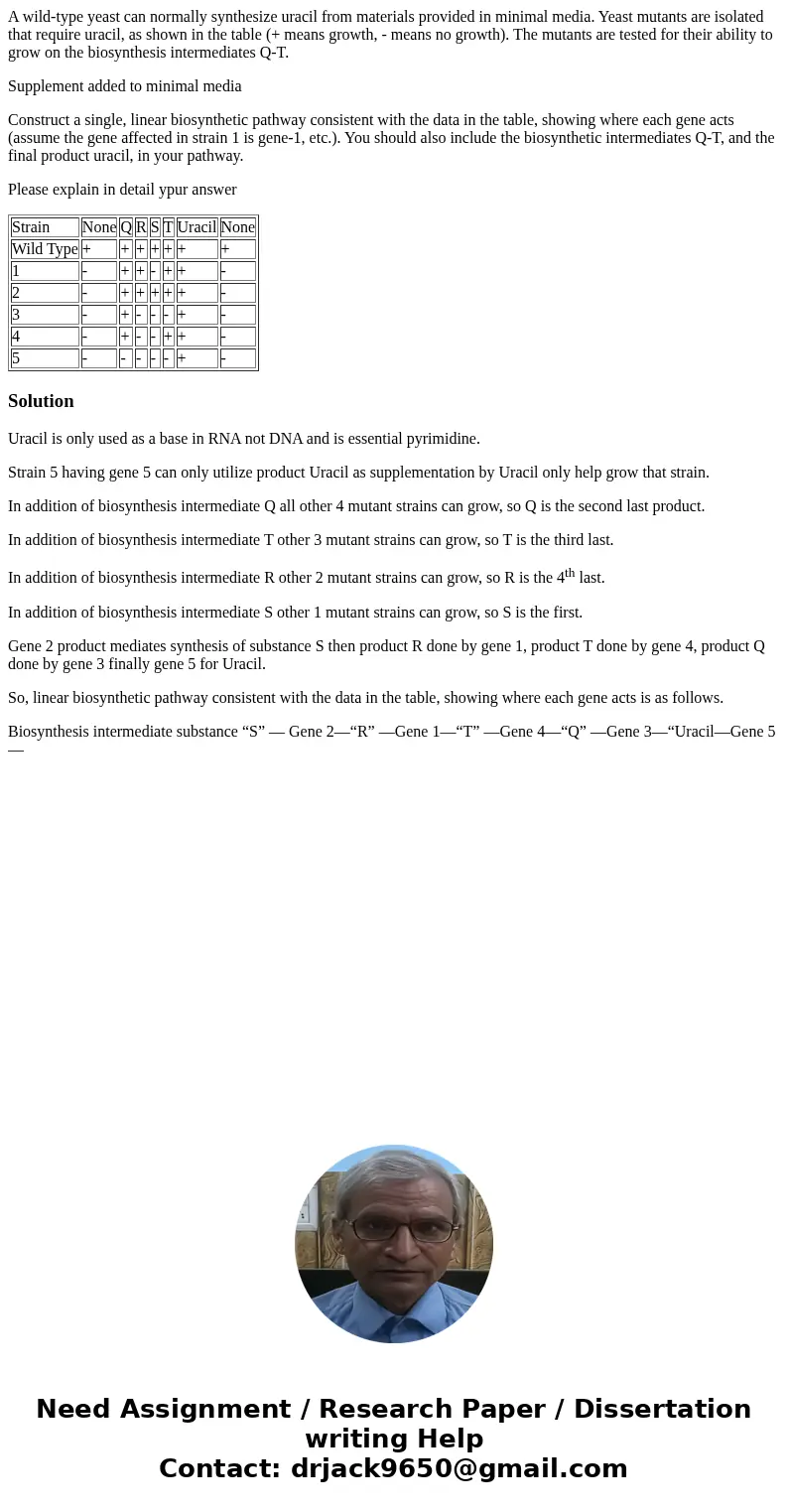A wildtype yeast can normally synthesize uracil from materia
A wild-type yeast can normally synthesize uracil from materials provided in minimal media. Yeast mutants are isolated that require uracil, as shown in the table (+ means growth, - means no growth). The mutants are tested for their ability to grow on the biosynthesis intermediates Q-T.
Supplement added to minimal media
Construct a single, linear biosynthetic pathway consistent with the data in the table, showing where each gene acts (assume the gene affected in strain 1 is gene-1, etc.). You should also include the biosynthetic intermediates Q-T, and the final product uracil, in your pathway.
Please explain in detail ypur answer
| Strain | None | Q | R | S | T | Uracil | None |
| Wild Type | + | + | + | + | + | + | + |
| 1 | - | + | + | - | + | + | - |
| 2 | - | + | + | + | + | + | - |
| 3 | - | + | - | - | - | + | - |
| 4 | - | + | - | - | + | + | - |
| 5 | - | - | - | - | - | + | - |
Solution
Uracil is only used as a base in RNA not DNA and is essential pyrimidine.
Strain 5 having gene 5 can only utilize product Uracil as supplementation by Uracil only help grow that strain.
In addition of biosynthesis intermediate Q all other 4 mutant strains can grow, so Q is the second last product.
In addition of biosynthesis intermediate T other 3 mutant strains can grow, so T is the third last.
In addition of biosynthesis intermediate R other 2 mutant strains can grow, so R is the 4th last.
In addition of biosynthesis intermediate S other 1 mutant strains can grow, so S is the first.
Gene 2 product mediates synthesis of substance S then product R done by gene 1, product T done by gene 4, product Q done by gene 3 finally gene 5 for Uracil.
So, linear biosynthetic pathway consistent with the data in the table, showing where each gene acts is as follows.
Biosynthesis intermediate substance “S” — Gene 2—“R” —Gene 1—“T” —Gene 4—“Q” —Gene 3—“Uracil—Gene 5—

 Homework Sourse
Homework Sourse